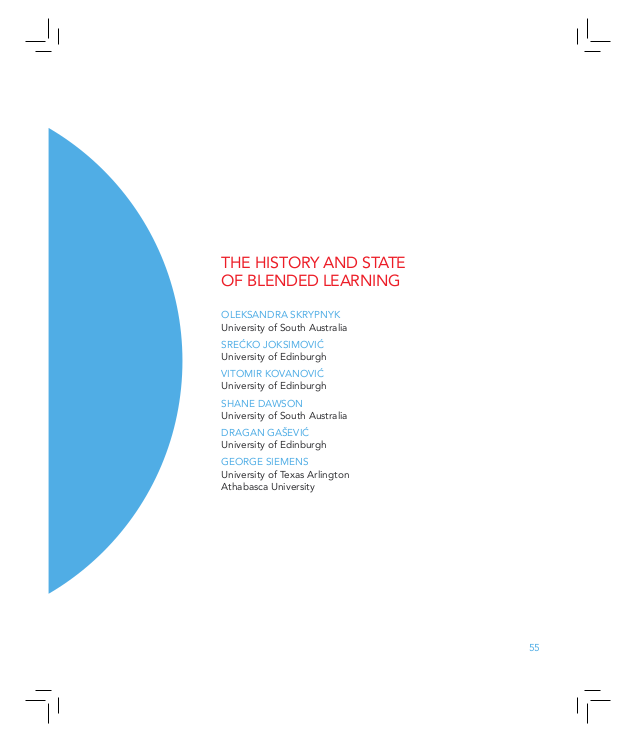This report forms one part in a series of articles offering an overview of the state of distance, online, and blended learning, and positioning them in relation to the emerging domain of digital learning. This particular report focuses on blended learning (BL), referring to the practices that combine (or blend) traditional face-to-face (f2f) learning with online learning (OL). As the concept of BL continues to gain trac- tion in educational settings, researchers are attempting to establish and verify the learning gains it brings. This report seeks to outline the debate regarding BL definitions, ped- agogical benefits, and deficiencies that arise in academic studies, and reflect on the future direction for BL. Our critical overview of the state and development of BL is structured to reflect the dominant themes of twenty systematically selected second-order academic studies of BL. This report reviews main findings around such dominant themes as the effectiveness of BL, recommended instructional practices in BL delivery and design, as well as the state of research into BL. The findings suggest that advances in technology have fueled the development of BL from a grassroots practice to an emerging research field. The implementation of BL practices by including both online and f2f modes of delivery positively influence student performance, making BL an at- tractive educational provision. At present, the field of BL is still dependent on the modes of delivery it is derived from, drawing heavily on OL in both theory and in practice. The field of BL is a dynamically changing area, and much of the critique of the existing research noted here is likely to be rapidly addressed in future work. That being said, a critical overview of the field suggests that it can further mature by adopting a digital learning perspective in its own activities.
The history and state of blended learning
Book chapter
Open access
Published
In Siemens, G., Gašević, D., & Dawson, S. (Eds.), Preparing for the digital university: a review of the history and current state of distance, blended, and online learning, Pages 55-92. Edmonton, AB: Athabasca University.
Publication year: 2015

